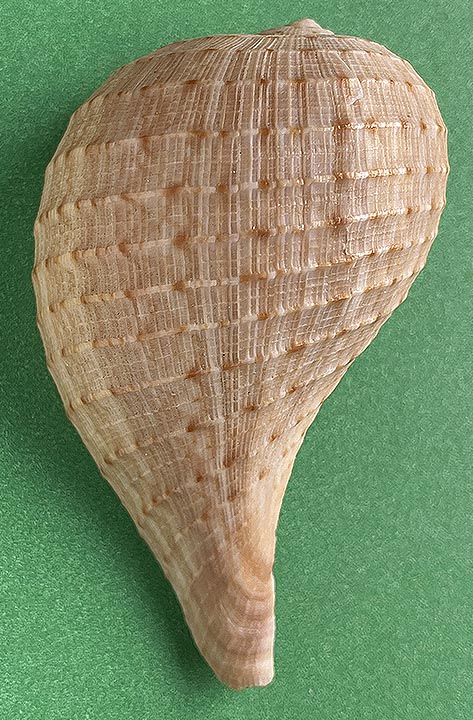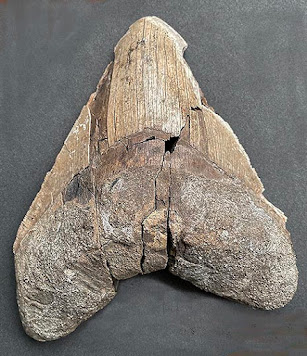Some things one can never forget, especially when they “repeat themselves.” A case in point: two strong earthquakes that I personally experienced. Both took place in the northern San Fernando Valley of southern California.
The first quake, the so-called “Sylmar Quake” (magnitude 6.4 to 6.5) occurred at 6 am on Feb. 9, 1971. It lasted 60 seconds. Sixty-four people were killed, and there was 5 to 1 billion dollars in damage. The fault was a “thrust fault” that reached the ground surface and locally caused fault scarps. There was displacement of railroad tracks, earthslides, collapsed parking structures, twisted support-columns/beams, collapsed apartment houses, water-line breaks, sink holes, collapsed bridges and overpasses, transformers toppled, library books and grocery-store stock thrown from their shelves. [Note: The epicenter (point of origin) of this earthquake is located in the mountains located several miles north of the San Fernando Valley]. Most of what I know about the damages associated with this quake are derived from the literature. Several very informative “papers” that provided much geologic detail about this quake are the following:
The San Fernando, California Earthquake of February 9, 1971. United States Geological Survey Professional Paper 733, 254 pp.
Jennings, P.C., editor. 1971. Engineering features of the San Fernando Earthquake. California Institute of Techonology Report EER71-02, 512 pp. [this publication has many photographs showing damage!)
San Fernando, California Earthquake of 9 February, 1971. California Division of Mines and Geology Bulletin 196, 463 pp. (with foldout geologic map).
The second quake, the so-called “Northridge Quake” (magnitude 6.7 to 6.8) occurred at 4:31 am on Jan. 17, 1994. It lasted 10 to 20 seconds. Fifty-seven to 60 people were killed, including some students (a few of them attended Cal State University) living in apartments near the university. Approximately a total of 8700 people were injured. It was a very costly earthquake, as it resulted in damages between 13 and 15 billion dollars. The fault was also a “thrust fault,” but it did not reach the ground surface and remained deep underground 11.31 miles (18 to 20 km) below the ground surface. This kind of fault is commonly referred to as a “blind thrust fault.” The kinds of damage were just like those or very similar to those associated with the “Sylmar Quake.” With the second quake, there was new potential for damage to computers and printers simply placed (without restraints on table tops). Although both quakes are not all that strong on the “Richter Magnitude Scale,” but both affected very populated areas. [Note: The epicenter (point of origin) of this earthquake is actually located in the city of Reseda, which is just south of Northridge. The name “Northridge quake” was commonly used by the news media].
I was a graduate student at Caltech in Pasadena when the “Sylmar Quake” occurred. At that time, I was not well acquainted with the local geography. I was not a homeowner, and I did not experience any hardships. But, this was the first earthquake I had ever experienced. It woke me up, and I watched my clothes swing on their hangers in my closet. I saw some loose concrete when I walked to my campus “lab,” where I discovered than some large glass jars which had been stored on tall shelves had fallen to the ground and spilled formaldehyde all over the place. Not a good day
I was a professor of geology/paleontology at Cal State University Northridge during the “Northridge Quake.” I lived about 23 miles to the north in the Saugus area. When I was eventually allowed to visit my office, I was shocked at the amount of damage. Only my heavy metal desk was still where it was supposed to be. Just about every thing else was displaced. A tall bookcase on the east wall was torn loose from the wall it was bolted to! The bolts ripped out, leaving large holes in the wall.
All the books in my bookcases were in piles on the floor. Luckily, my desktop computer was upright and in place. I could not see the floor of my office, however, because of all the books that had been “tossed” onto it. I walked across them, and I kept my balance by to placing my hands on the ceiling, so as not to fall down. I was given only an hour then, and another hour later in the week, to search my office for critical items. The entire building was then officially “sealed up” and was put under the auspices of the National Guard. Shortly thereafter, FEMA workers (federally financed) came in and attempted to “clean” up our offices by throwing everything into boxes. Eventually, professors were allowed to return to their offices. For many months, we had to use trailers instead of our offices. The trailers were brought in from all over California. Our classrooms were in a multi-storied building elsewhere on campus. They too had sustained some damage: cracked concrete walls and damaged floor tiles. Also the heating system was no longer working, so for one semester we had to wear winter coats to class.
My house is located 23 miles to the north of the Cal State Northridge campus. Damage in that particular area was considerably less than that in Reseda/Northridge area although the main north to south freeway (I-5) that linked Northridge to Santa Clarita had to undergo considerable repair (e.g., collapsed overpasses). These repairs were done over a short interval, but it required intense, working around-the-clock for several days/weeks.
The most common type of damage in both Northridge and Santa Clarita was the collapse of concrete-block fences that lacked rebar reinforcement.
Interestingly, I know of no official published reports of the “Northridge Quake.” I guess the papers associated with the 1971 quake pretty covered the subject, including examples of damage.
I would like to stress just how similar these two quakes were. Undoubtedly, there will be more like them in the future. The reasons are that they occur in the same geologic setting; namely, a dynamic and still evolving “story” involving complicated tectonic movements along the complex San Andreas Fault System that have “sliced and diced the rocks” since middle Cenozoic time and will continue to do so in the future. Note: Ever since the “Northridge Quake,” I have secured my desktop computer so that is can’t fall and hit the floor. One of my more simple solutions is to place the equipment on a table that has wheels. When the quake hits, the table will move back and forth, but the computer is not likely to fall off. Most people are amused by my abundance of caution, but once “burned,” forever learned!
Map showing the closely adjacent locations of the “Sylmar” and “Northridge” areas. Epicenter (blue dot) of the Sylmar Quake. Epicenter (red dot) of the Northridge quake.
THIS FIRST GROUP OF IMAGES SHOWS REPRESENTATIVE DAMAGE ASSOCIATED WITH THE SYLMAR QUAKE OF 1971.
Front ends of cars crushed by the collapsed floor of the apartment complex.
More crushed cars.
As you can see, collapsed apartment buildings were commonplace.
Walls of an apartment complex just west of the CSUN campus fell off!
THE FOLLOWING GROUP OF IMAGES SECOND ARE OF THE 1994 NORTHRIDGE QUAKE:
Map showing the types of damages and the main areas where they occurred.
One of the most iconic areas of damage in Northridge was the “brand new” student-parking structure at Cal State University. It cost plenty of money and was scheduled to be start being used, one week or so before the earthquake hit.
Front view of the "rolled over" parking structure (see previous image).
A collapsed stairwell along one side of the parking structure.
A completely damaged hospital building in Northridge.
Partially collapsed apartment buildings immediately east of the Cal State University campus. The left side of the building used to be three stories high, but the earthquake caused the building to become only two stories high!:
Twisted support column underneath the Foothill freeway on the north side of Northridge.
AN INTERESTING SIDE NOTE TO KEEP IN MIND!I did some research and found that there was a third similar historic quake that occurred in this particular area, which is locally known as the Mentryville (aka Mintryville) ranch house located a few miles immediately west of Santa Clarita (aka Saugus). This quake occurred on April 4, 1893 at approximately noon. There was just one main shockwave, and it lasted 10 to 15 seconds. Damage was sparse because the area was ranch land. There were no deaths reported, but back then only a few people lived there. There were many landslides, however.




















